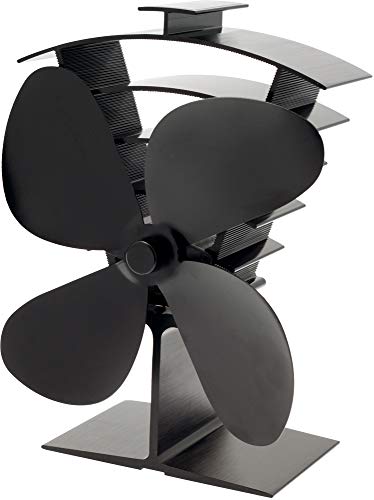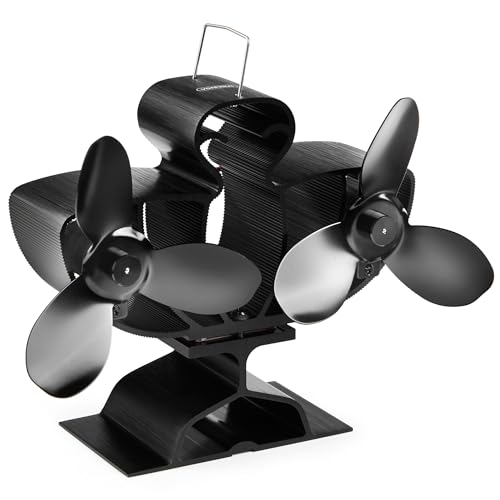What is a stove fan and how does one work?
This simple accessory uses clever physics to increase the useful heat from your wood burner
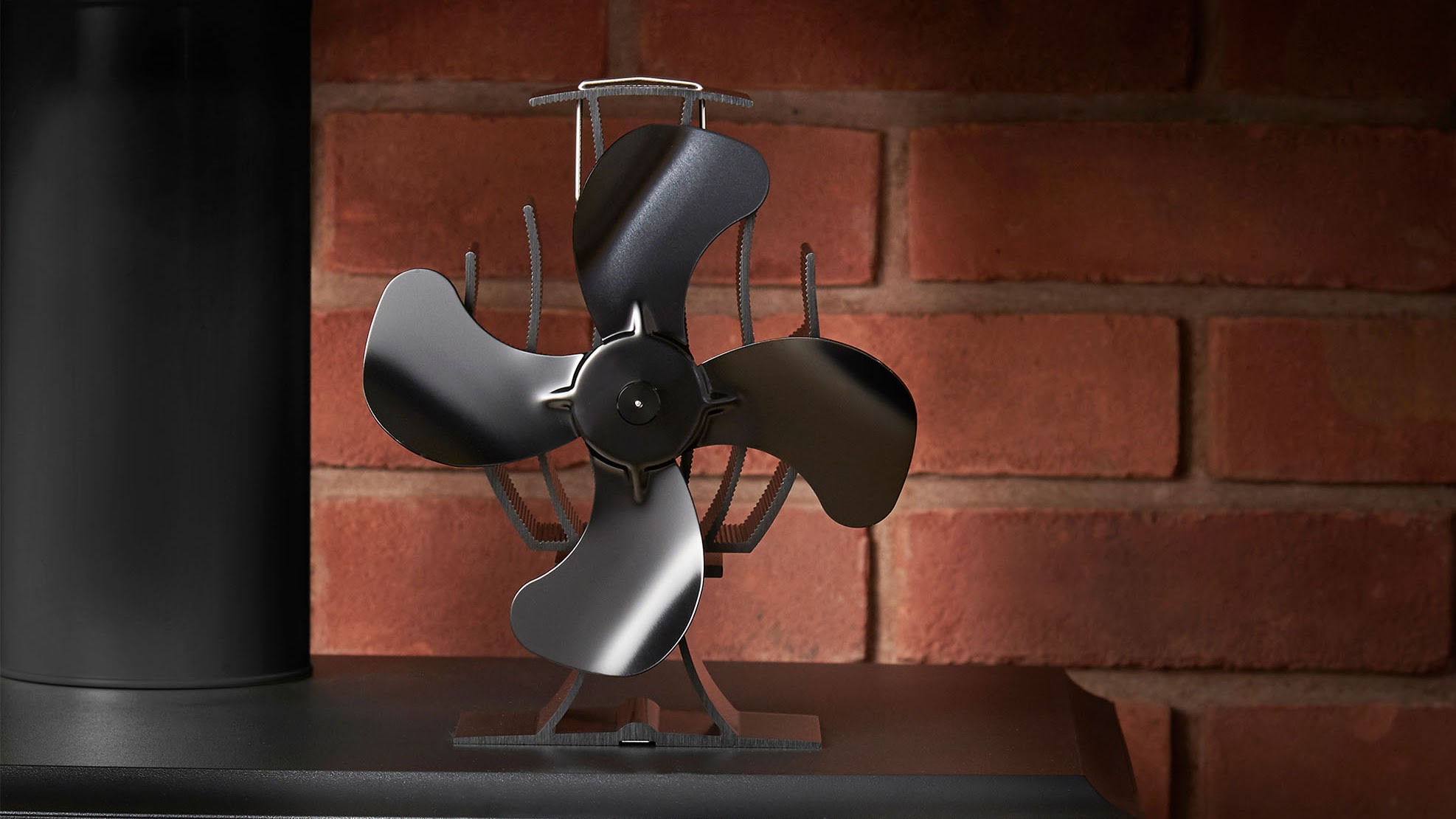
Log burning stoves are a cosy and capable solution to keep you warm during the winter. However, on very cold days, or if you’re not getting enough heat out of your stove, then you might consider placing a stove fan on the stovetop to maximise its useful heat output.
The best stove fan is a compact, standalone device made to use on top of a stove (or, less commonly, to attach to the flue or stove door). Most models are about half a foot tall, consisting of a stand and revolving fan blades made from a conductive, heat-resistant material such as stainless steel, aluminium or brass.
The purpose of a stove fan is to take heated air from above your stove and push it outwards into the room. This makes good use of heat energy that would otherwise be wasted – you’ll feel the warmth of the heated air, rather than losing it via heat transfer into the surrounding walls and chimney.
Remarkably, stove fans don’t require batteries or a power supply to turn their blades, as they generate their own power thermoelectrically.

Adele Brennan has 11 years’ experience within the retail industry and currently specialises in home electrical products, covering kitchen, heating, cooling, and cleaning. Within her current role at Domu Brands, Brennan is responsible for sourcing and choosing high-quality products for retail. Domu Brands owns VonHaus, a producer of stove fans, tools and numerous other homewares.
How does a stove fan work?
The air above a wood burning stove gets very hot – but we tend not to feel the benefit, as the heat is transferred into walls and other surfaces close to the stove.
Most stove fans are thermoelectric. When stood on top of a hot stove, they heat up, and a special component called a Peltier module delivers an electric current to the blades. The blades turn, draw in the hot air from above the log burning stove, and push it outwards.
“In a Peltier-type stove fan, heat travels up the fan’s conductive frame, making one side of the device hot and the other cool, due to its heat sink effect,” says Adele Brennan, Home Electricals Buyer at Domu Brands, which is the parent company of stove fan and homewards brand, VonHaus.
“This thermal difference creates a voltage which powers the blades. The fan takes in the cool air, heats it, and blows it out to warm your room.”
Some premium stove fans (such as this Warpfive model from Amazon) use an alternative mechanism known as a Stirling engine, which moves the fan blades by harnessing the effects of heating on gas within a chamber. Stirling engine stove fans usually have a glass chamber, so you can enjoy watching the action of their mechanism.
Whichever of the two stove fan types you choose, the accessory should make your room feel warmer if you thought you weren't getting enough heat out of your stove, as less of the heat from your wood burner will escape up the chimney.
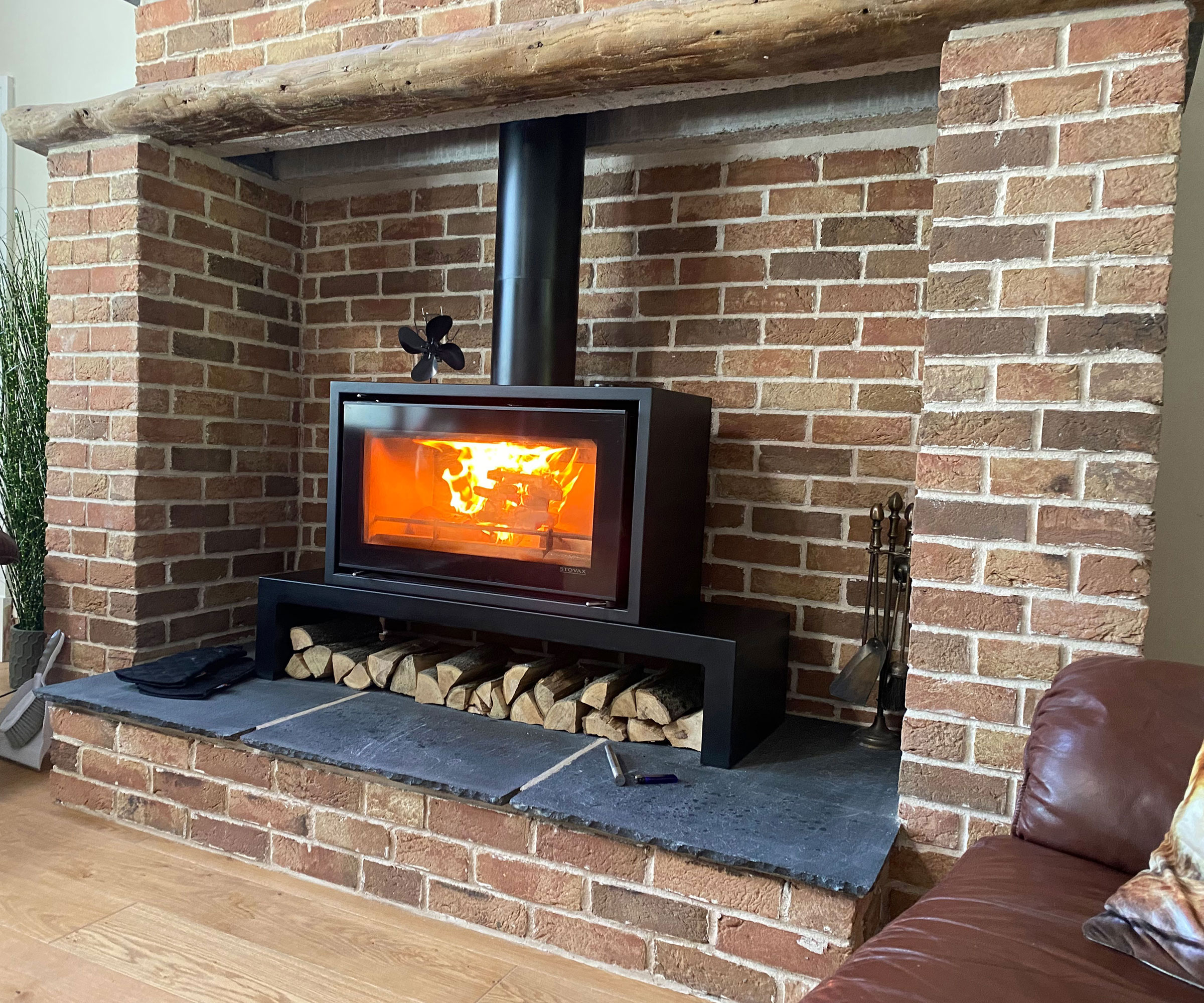
Where to position a stove fan?
First, consider the direction of your stove fan, as this will determine how much heated air reaches you and escapes from the fireplace area.
“We’d recommend you put your stove fan on the stove and face it in the direction you want warmth to radiate,” says Brennan.
“The stove fan will start to work automatically and start heating your room right away.”
To limit the rate of heat loss through absorption, make sure the fan is facing away from any walls surrounding the stove.
According to Joanna Humphreys, fire and stove specialist at Direct Stoves, the placement of the fan on the stove is also key.
“Log burner fans are typically freestanding and therefore should be placed on top of the stove,” she says. “Optimum positioning is on the top of stove, at the back, so that it also pushes heat generated from the flue pipe into the room.”
One place you shouldn’t stand your stove fan is at the front of the stovetop. This area tends to be relatively cool, so you won’t get optimal performance from the fan.
An alternative type of stove fan, called a flue pipe fan, should be installed on the flue that rises from your stove. It’s generally advised to situate this type of fan near the bottom of the flue pipe, as that area gets particularly hot.
Meanwhile, if you have an inset or built-in stove, you’ll need to use a stove fan that comes with a vertical mounting kit, such as the Sirocco Plus on Amazon.

Joanna Humphreys is a fire and stove expert at Direct Stoves, an online stove retailer selling an array of wood burning, multi fuel, gas, and electric stoves.
Shop these cheap stove fans
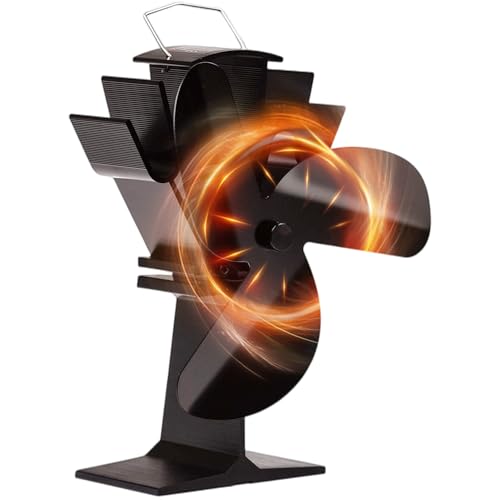
The propeller is the only moving part, making this stove fan very quiet to run
What is the optimum stove temperature for a stove fan?
Every stove fan has a minimum operating temperature required for its blades to spin, which will usually be reached quickly as the stove heats up.
More importantly, the fan will also have an optimal temperature range that produces the most benefit in terms of useful heating.
You should be able to find both specifications in the product description of any stove fan. Compare these details to your log burner’s operating temperature, before you choose a fan.
“Most stove fans need a starting temperature of at least 50°C in order for the blades to start spinning,” says Brennan. “However, in terms of optimal temperature overall, you should be looking at between 205 and 345°C.”
Does it matter what number of blades a stove fan has?
Most stove fans have somewhere between four and six fan blades, as is the case with this popular four-blade model from VonHaus on Amazon, which is pictured in the header image. You can also find models with even more blades – or just two or three.
As a rule, stove fans with a lower blade count tend to move air more powerfully, while a higher number of blades means the fan will probably work relatively gently.
“If you want a stronger breeze for the heat to circulate more around the room, a stove fan with fewer blades will be the best choice, however the fan is likely to be louder,” Brennan explains. “Stove fans with more blades tend to be quiet with a weaker breeze, so a fan with a high number of blades might be a good choice if you don’t need as much heat circulation.”
With all that said, while some stove fans are louder than others, the vast majority of these devices operate quietly – and far less noisily than the average electric cooling fan.
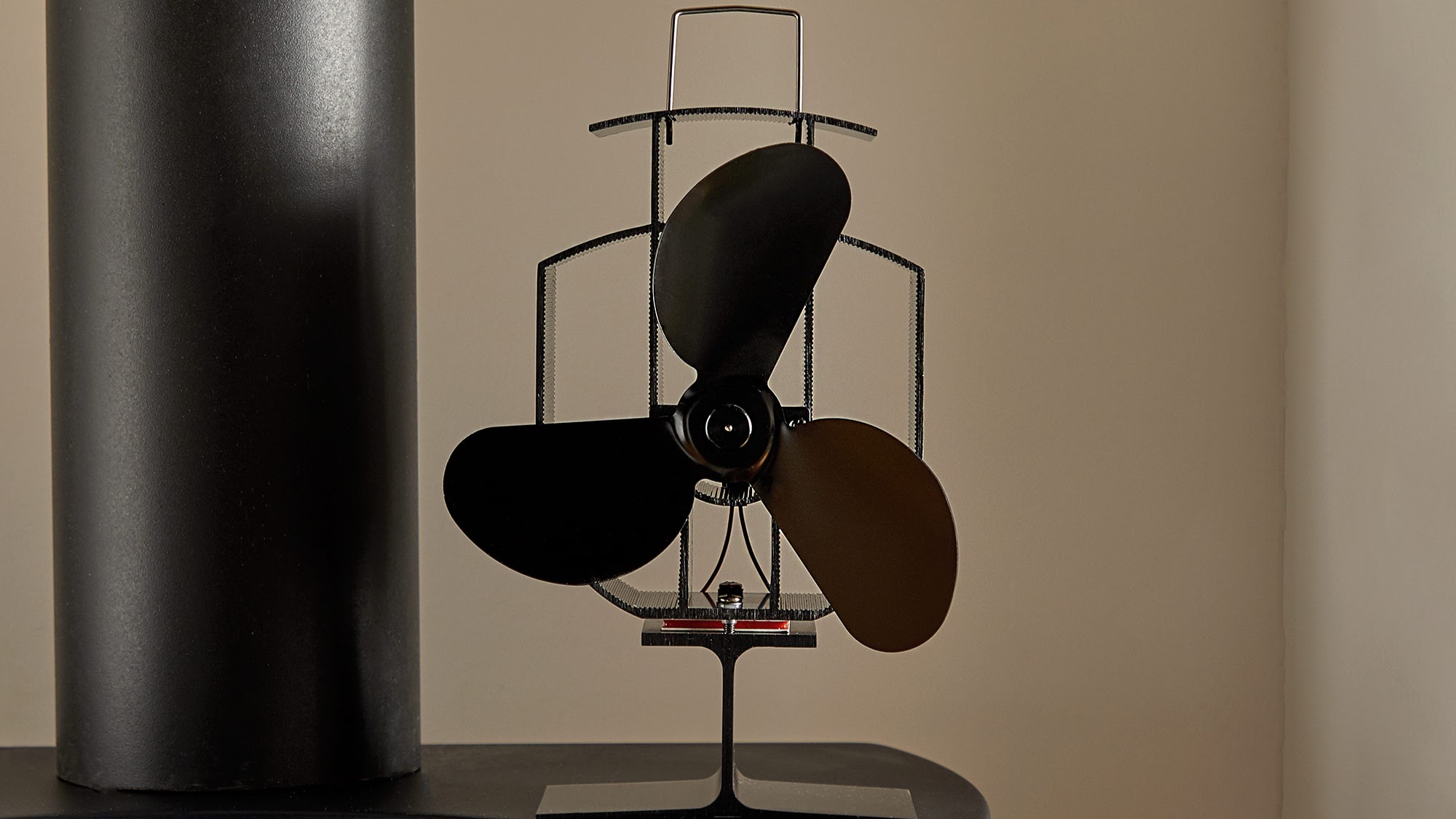
FAQs
What is the best stove fan material?
Stove fans are made from various materials, including aluminium, brass and stainless steel. All of these materials must conduct heat so that the fan can work thermoelectrically, and should resist heat damage to ensure the fan remains operational and looks presentable for a number of years.
“We recommend opting for a fan made from anodised aluminium, as this means the fan has been treated to enhance durability and increase resistance against corrosion,” says Brennan of Direct Stoves.
These fans are also able to operate from temperatures of only 50 degrees, which means they will kick into action quickly, even if your stove hasn’t yet reached optimum operating temperature.”
Does a stove fan use electricity?
Most stove fans do use electricity to move their fan blades – but they generate the power autonomously by converting heat into electric current.
So, unlike the vast majority of household electrical devices, stove fans do not require a power source such as batteries or a mains connection. Simply place the stove fan on top of a hot stove, and its Peltier component will transform the heat into power to turn the fan blades.
Do more blades mean more heat?
No. Typically, the more blades a stove fan has, the more gently the fan will blow. So, more blades actually means a lower volume of heated air is circulated around the room.
The upside to using a stove fan with a high number of blades is that the fan will likely run quieter than a comparable model that has fewer blades.
If you’re keen to maximise the useful heat output of your log burner, you might consider using a double stove fan – or two individual fans placed at opposite sides of the stove.
If you're still looking at which stove fan to buy, you can have a read of this review of a cheap stove fan that helped boost the heat output of a colleague's woodburner. Meanwhile, if you're also looking at how to maintain your log burner, it's worth looking at how to clean log burner glass as well.
Get the Homebuilding & Renovating Newsletter
Bring your dream home to life with expert advice, how to guides and design inspiration. Sign up for our newsletter and get two free tickets to a Homebuilding & Renovating Show near you.
Pete Wise is a freelance writer and keen DIYer from Leeds. Pete's tool reviews have featured in titles including Homebuilding & Renovating, Ideal Home and The Independent. He also writes features and news articles for publications such as The Guardian, BBC Good Food and T3. When he isn't busy writing, Pete can often be found at libraries, pubs and live music venues. He finds tile-cutting strangely zen.
